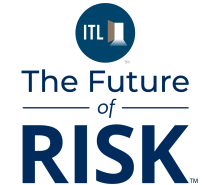The world today is burning, drowning and crumbling in ways that no one can ignore. The tragic scenes in Los Angeles in January were just the latest proof. As temperatures rise and weather patterns grow more violent, the question is no longer whether disaster will strike but when – and how hard.
Economic losses from natural catastrophes reached $350 billion last year. And in this new age of climate uncertainty, insurers find themselves at a crossroads: adapt or collapse. The storms will come, but human and financial losses need not rise with the seas.
In California, wildfires now rage with such frequency and ferocity that several major insurance companies have simply quit. In less than a year, from summer 2023 to early 2024, eight insurers stopped writing new home policies in the state, claiming that wildfire risks made business untenable.
Flood-prone areas are facing the same grim exodus of insurers, leaving thousands uninsured and vulnerable. This is the so-called "protection gap" – an inoffensive term that in reality means homes left unprotected, lives potentially left in ruins.
To close this gap, insurers must shift from paying compensation for damage to actively predicting and preventing it from happening. The existing model must ascend to the next level. The climate crisis has made nature too fierce, predictable only in its unpredictability. "Acts of God" have become commonplace. Now, the cost of reaction and response are just too high. Hence the need to predict and prevent.
Consider this: Every euro spent on disaster prevention saves between five and seven euros in recovery costs. This was a finding of the European Investment Bank; it describes a sound investment by any standard you choose. The question is why more insurers are not doing it.
One answer lies in the sheer complexity of modern risks. Unlike hurricanes or earthquakes, so-called "peak perils," which tend to devastate large areas, wildfires and floods often strike with pinpoint precision. One house burns while its neighbor remains untouched. This confounds traditional risk models, which rely on broad statistical averages.
Technology presents a path through the fog. Geospatial technology, in particular – mainly satellite data, made intelligible with artificial intelligence and geoanalytics – can now monitor the planet in astonishing detail. Insurers can track weather patterns in real time, pinpointing the precise location of emerging risks. They can find out not just that a fire is coming, but exactly which valley it will sweep through and which homes lie in its path.
This is no longer science fiction. Some forward-thinking insurers are already using such tools. If a wildfire looms, they alert clients to take defensive action – clearing brush, installing fire-resistant materials or even hiring private firefighting teams. The same principle applies to global commerce. "Moving assets" – ships carrying vital goods – can be tracked minute by minute. If political unrest, piracy or a typhoon threatens a key shipping lane, insurers can warn businesses to reroute their cargo, avoiding catastrophe before it strikes.
Yet, for all its promise, this predictive approach to insurance faces resistance. It demands that insurers rise to the height of a major challenge, becoming highly active, data-driven risk analysts and managers, working closely alongside clients to reduce exposure before disaster hits. It means investing in historical datasets, sophisticated geospatial technology and human expertise. It means rethinking what insurance is or, if you prefer, "completing" insurance, realizing more of its potential to make human settlements robust.
Critics will say that such efforts are costly, that they will cut into profits. Or they'll say that the technology isn't there yet, that it can't possibly face up to the task we're facing. This is too pessimistic.
Insurance emerged as a means to manage the uncertainties of a dangerous world, to save people from having to lean on neighbors and loved ones to pick up the pieces after catastrophe. It has evolved and evolved and evolved again as the world has changed. History, after all, is ruthless to those who won't adapt.
Today, the dangers facing us have multiplied and intensified. So must the industry's capabilities. It isn't easy, but it is simple. That evolution, a genuine leap forward for this essential, even vital sector, can help to keep people safe.
We don't need to overstate the point, but the stakes are high. If insurers retreat from the riskiest places, the protection gap will widen into a chasm. Whole regions could become uninsurable, their economies shattered. The alternative is a world where insurers, equipped with expertise and the most advanced available technology, serve not just as financial backstops, as essential as those are, but as frontline defenders against the crises of the future.
The climate crisis is no longer a far-off threat to our communities. It is here, reshaping lives and landscapes with brutal indifference. Insurers have a choice: predict and prevent, rise to the occasion, enlarge its important social role as a guarantor of community resilience, or retreat. The storms will rage regardless. But how much we lose – both in lives and livelihoods – depends on what we do now.







